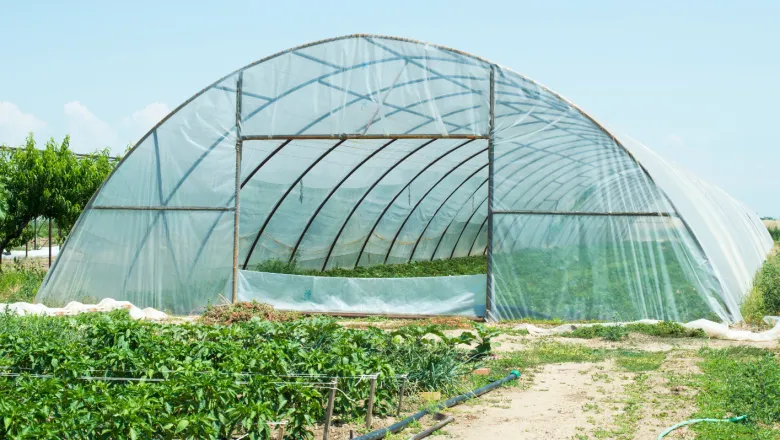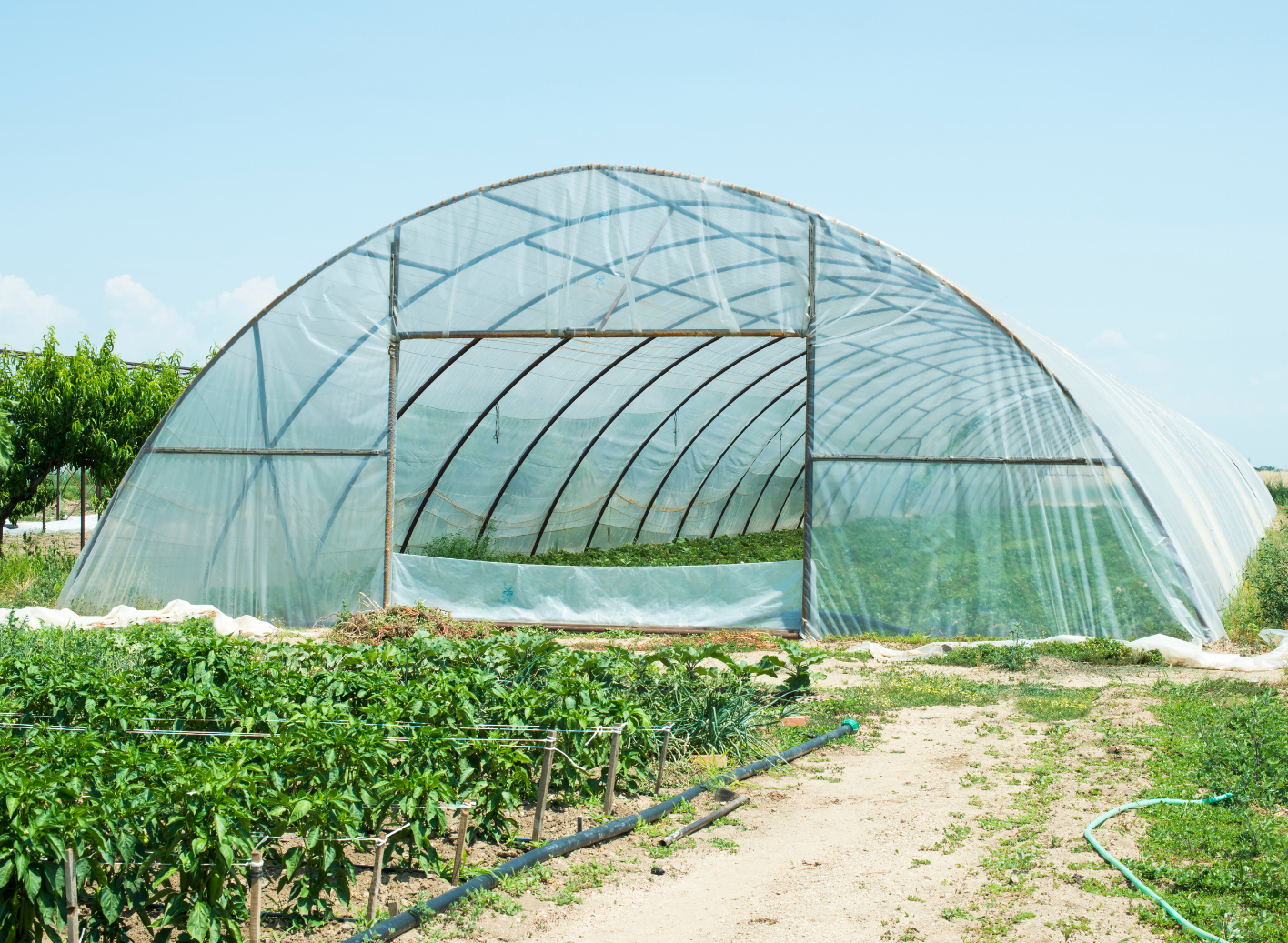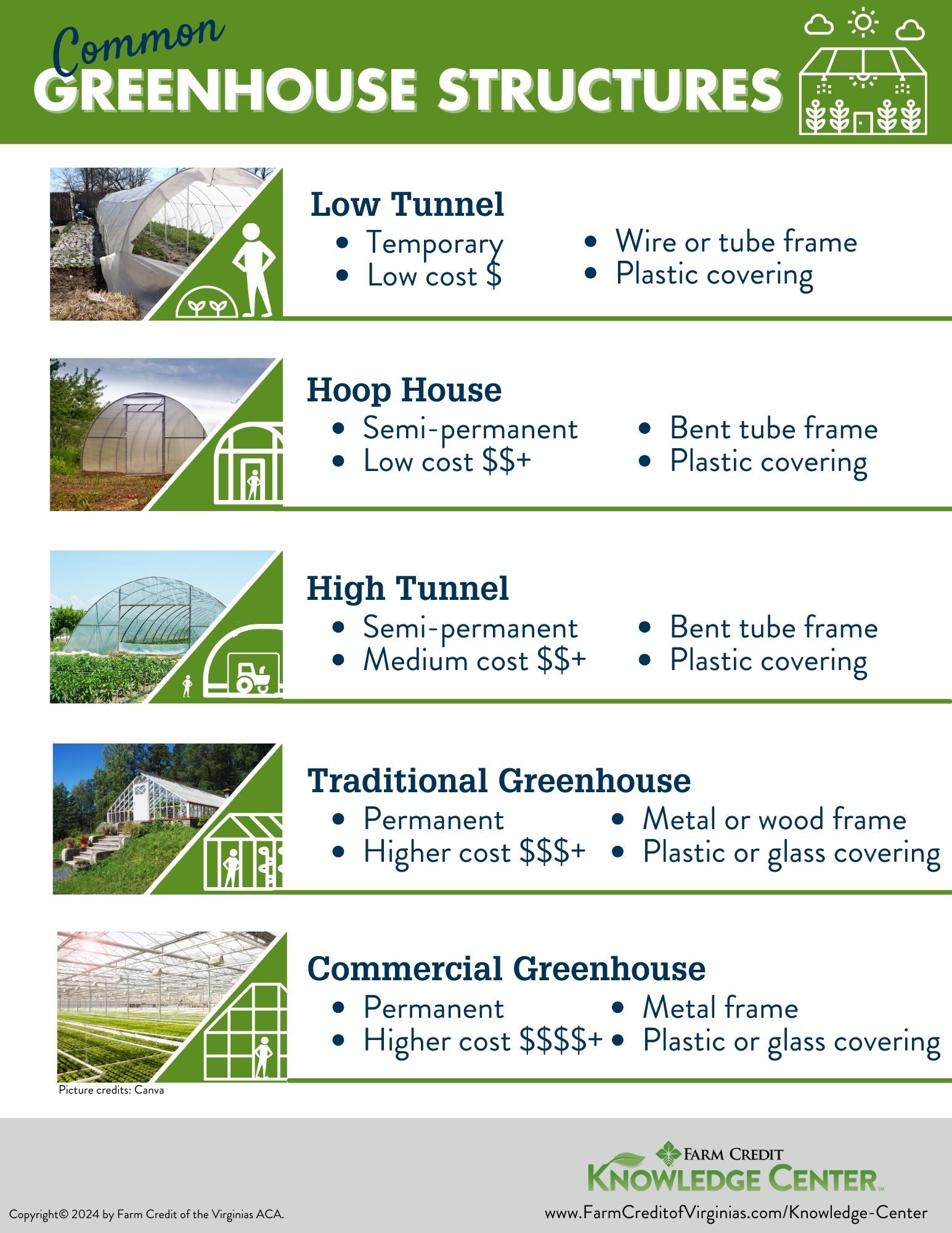Common Greenhouse Structures

Other
We are nearing early spring and the urge to begin our summer gardens is becoming more prevalent. You may have seed catalogs beginning to show up in your mailbox and you may be sketching out your garden plans. Garden talk this time of year is highly focused on starting earlier and extending the growing season later or even for year-round production.
The hottest topic for the task… greenhouses. It is said the first could be credited to a French botanist from Holland back in the 1800s. Charles Lucien Bonaparte built a greenhouse to grow medicinal tropical plants. From there, universities started to use them to grow the science of botany.
The term is simply defined as a building where plants are grown and can be further defined by stating they provide protection from cold weather and can be climate controlled. This article uses the word loosely to represent a building where plants are grown.
Today, they are used by both small-scale and large commercial operations specializing in vegetables, flowers, trees and shrubs. The wonderful aspect about greenhouses is they are obtainable not only by large agribusiness operations, but also for the home grower in both rural and urban settings.
They are a valuable tool for growers in general and can lengthen the growing season. They provide a more controlled environment with plants protected from weather and geography and are temperature controlled.
But what type suits your growing needs? Depending on your location, budget, and what you intend to grow, there are multiple options to choose from.
Below is an overview of different types. This list is not exhaustive as they can come in many different shapes and sizes. We will review the common structures used today and which are easily accessible.
High Tunnel

.png)
High tunnels represent structures designed to be lighter, mobile, and flexible providing versatile use for all types of growers. They are also built to be high enough to accommodate machinery like tractors and tillers. High tunnels are often protecting crops that are directly planted in the ground vs. traditional greenhouse buildings that plant in raised beds.
High tunnel coverings can be completely removed to allow for direct outside exposure or closed to maximize protection from weather. This gives the grower flexible options to protect crops from early spring frost through late fall chill.
Low Tunnel
.png)
.png)
Low tunnels are low to the ground and serve as temporary structures protecting planted crops. Low tunnels can be four feet tall or as low at two feet tall. Hoops, often constructed of wire or tubing, are either supported by a frame or pushed into the ground. Plastic covering is placed over the top creating a protective environment. The plastic can be removed during the day to allow for natural light and exposure or can be closed during periods of cooler or adverse weather.
Low tunnels provide the benefit of heating the soil which allows for earlier planting of tender plants and can also extend the season protecting plants well into the fall. Low tunnels provide an effective low cost, temporary and flexible option for many types of growing situations.
Hoop House
.png)
Hoop houses are often seen amongst home gardeners and small scale agricultural operations. They are loosely defined as smaller sized high tunnels. They are designed to offer the same benefits as high tunnels and traditional buildings but are simpler in nature. They come in multiple styles, the most common being an arch of bent tubing that supports the structure. Building plans for hoop houses vary, but consist of a ground frame where the bent tubes are secured. Plastic film then covers the structure. Hoop houses can be low to the ground or built at a height tall enough for an average adult to stand up inside.
Hoop houses can be very affordable depending on your materials. One thing to consider is their ability to withstand extreme weather. Hoop house have difficulty withstanding high winds and cannot support large amounts of snow.
These houses provide excellent light and protection for tender early starts and can protect crops well into fall. They are also flexible in design because they can be expanded in length.
Traditional
.png)
.png)
Traditional buildings are an outstanding permanent option. They are “house-like” shaped structures and exceedingly effective. The frame offers excellent support against wind and heavy snow. They offer great lighting and are durable. They are built using plastic (fiberglass, polycarbonate, polyethylene film) or glass.
Traditional greenhouse kits can be purchased and installed by the homeowner, or can be purchased and installed by an outside company. Whichever greenhouse you choose, you can be assured you have plenty of design options to choose from. From siding material to airflow and heating options, you can design the exact structure for your needs.
Since these structures are more permanent in design, they may require ground preparation or foundations and may be subject to obtaining permits.
Commercial
.png)
.png)
Greenhouses are used by large commercial operations specializing in vegetables, flowers, trees and shrubs to be sold for commercial consumption. Crops grown may be sold as retail or wholesale stock. Large commercial structures can be very large, covering multiple acres. They are permanent structures made of long-standing glass or plastic. Many of them can accommodate tractors and vehicles, have employee areas, bathrooms and offices. These buildings are usually off limits to the general public.
Small-scale commercial operations may use any combination or greenhouse structures and may be temporary or permanent. The type of structure depends on the crop they choose to grow, location and business plan and goals. Small scale operations may sell their crops at retail on the farm or to wholesale outlets. Some small scale operations use greenhouse structures to hold products for sale and allow customers to shop inside.
If you are considering investing in a structure to extend your growing season, you have many options to choose from. From low tunnels to permanent greenhouse buildings, finding the right structure begins with determining your needs and planting desires. Consider location, direction and whether you want a temporary or more permanent solution. Greenhouse options are available for both rural and urban gardeners. Check your local zoning ordinances or neighborhood Home Owners Associations or Covenants, Codes and Restrictions to ensure you choose an allowable design.
Download a PDF version of this infographic.

Picture source: Canva